
Décember 02 , 2019.
Mexico , Colima :
Special Notice for the activity of the Colima volcano
Notice: 872. Mexico, November 30, 2019. Distribution: 1 pm.
It is expected that the ashes emitted by the volcano will have a main direction towards the East of the Mexican Republic.
Radiosonde of Manzanillo, Colima (12Z) 06h00, local time on November 30, 2019:
At 5000 m: South wind of 19 km / h
Between 5000 and 7000 m: South-South-West wind of 26 km / h
Above 7000 m: Southwesterly winds of 24 km / h
Description of satellite images:
Cloudiness is observed in the volcano region, by means of the satellite image.
Ash trajectory planned for the next 24 hours:
The predicted trajectory of the NOAA Hysplit model indicates a shift to the east of the Mexican Republic. Beginning its trajectory in the North-East of the state of Colima, South-South-East of the state of Jalisco; and west of Michoacán State, for the first 12 hours of forecast. Subsequently, during the last 12 hours of the forecast, the trajectories will continue in the center and east of the state of Michoacán. These trajectories would mark the main direction of emissions of the plume of gas, water vapor and / or volcanic ash, from the volcano Colima.
Forecasts prepared with information from CENAPRED-SEGOB, SENEAM-SCT and NOAA.
Source : CONAGUA.
Lire l’avis : https://smn.conagua.gob.mx/en/pronosticos/avisos/aviso-especial-por-la-actividad-del-volcan-de-colima.
Chile , Nevados of Chillan :
Volcanic Activity Report (RAV) Volcanological Observatory of the Southern Andes – Ovdas
Seismic activity: in the past 24 hours, the instrumental monitoring network of the Nevados de Chillan volcanic complex has recorded volcano-tectonic (VT), long-period type (LP), tremor (TR) type seismicity very long period type (VLP), releasing seismic energy at moderate levels. This LP seismicity is frequently related to the occurrence of explosions (EX), which cause surface activity.
Notes: The higher energy VT earthquake was located 1.8 km northwest of the active crater at a depth of 13 km. When weather conditions permitted, explosive activity was recorded, with pulsatile emission of gases and particles. During the night it was possible to observe small explosions with projection of incandescent volcanic material around the active crater.
The MIROVA group reported a maximum thermal anomaly of 48 MW.
Infrasound sensors recorded signals associated with explosions (EX), with a maximum value of 13 Pa reduced to 1 km
Exposure / Specific Hazards: The background of the instrumental network indicates continuous deformation and increased seismicity in the volcanic complex, which is interpreted as an injection of new material into the internal system. This is consistent with the reported observations, particularly with regard to the emission of a bulk lava flow from the active crater and in the north-north-east direction of approximately 700 m in length, partially covered by three new streams of smaller extensions. In addition, dense pyroclastic current deposits have been observed in the immediate vicinity of the crater, in a southwesterly, northwesterly, northwesterly, and northeastern direction, with expansions of 850, 670, 1680, and 440 m. , respectively. The morphological changes observed in the crater zone, maintain a tendency to the growth of crater Nicanor in its Southwest edge, eroding the crater Arrau, with continuous emission of pyroclasts, splashes and gases, whose eruptive columns reached 1 km of above.
In addition, the appearance of an opening in the northeast edge of the active crater caused the intermittent emission of pyroclastics and gases. Given the instrumental parameters of the internal dynamics of the volcano and the morphological changes observed recently, an explosive scenario of moderate magnitude is established (IEV = 2 to 3), associated with the possibility of a destabilization of the volcanic system, consequence of the contribution the mass and heat of a new intrusion. In addition, the interaction between magmatic and hydrothermal systems could generate an explosive process of greater intensity.
Source : Sernageomin.
Italy / Sicily , Etna :
Moderate eruption continues in Etna’s summit craters as of December 1, 2019. The first photo was taken from Tremestieri Etneo (South Etna flank) at 8:27 pm (local time) tonight, showing strong glow in the Bocca Nuova, the Voragine and the Northeast crater.
The second photo shows a small explosion in the New Southeast Crater at 9:00 pm (local time) recorded by the Montagnola Thermal Imaging Camera (EMOT).
Strombolian explosion with a puff of ash in the Voragine crater at lunch time, November 27, 2019. View of Tremestieri Etneo (south side of Etna).
Source : INGV Vulcani .
La Guadeloupe , La Soufrière :
Sunday, December 1st, 2019, 3pm.
Sequence of earthquakes in La Soufrière area of Guadeloupe – Basse Terre
A sequence of volcanic earthquakes began on Saturday, November 30, 2019 at 09:09 local time (Saturday, November 30, 2019 at 5:09, universal time TU *) in the La Soufrière volcano area.
As of December 1, 2019 at 3:00 pm local time (7:00 pm GMT *), the OVSG-IPGP networks recorded 77 earthquakes of very low magnitude (M <1). No earthquakes were reported. The events are located at a depth of <2.5 km under the summit of the dome of La Soufrière.
The alert level remains: yellow, vigilance.
Source : Direction de l’OVSG-IPGP.
Photo : P Giraud / ctig
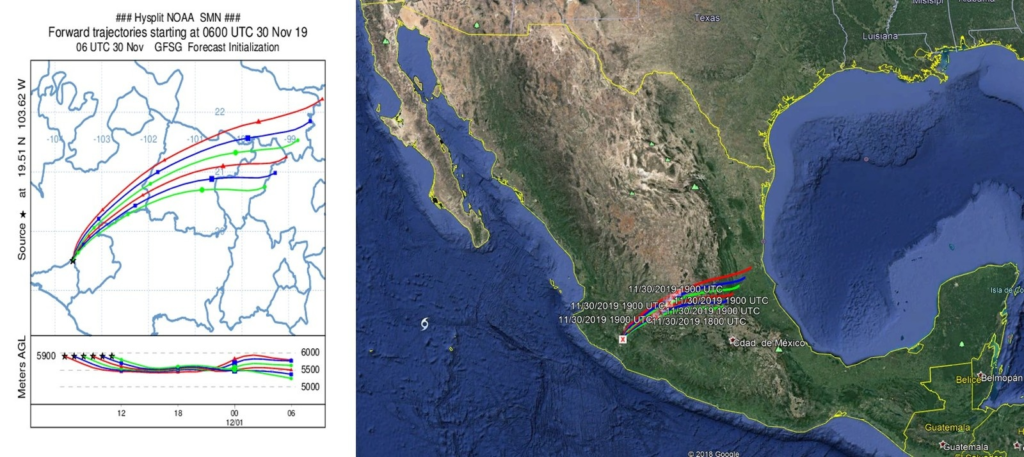
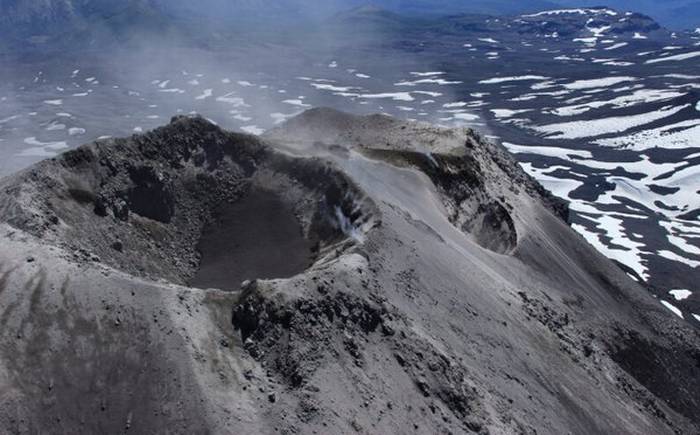
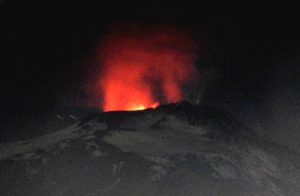
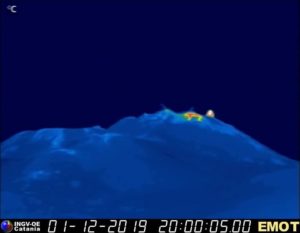
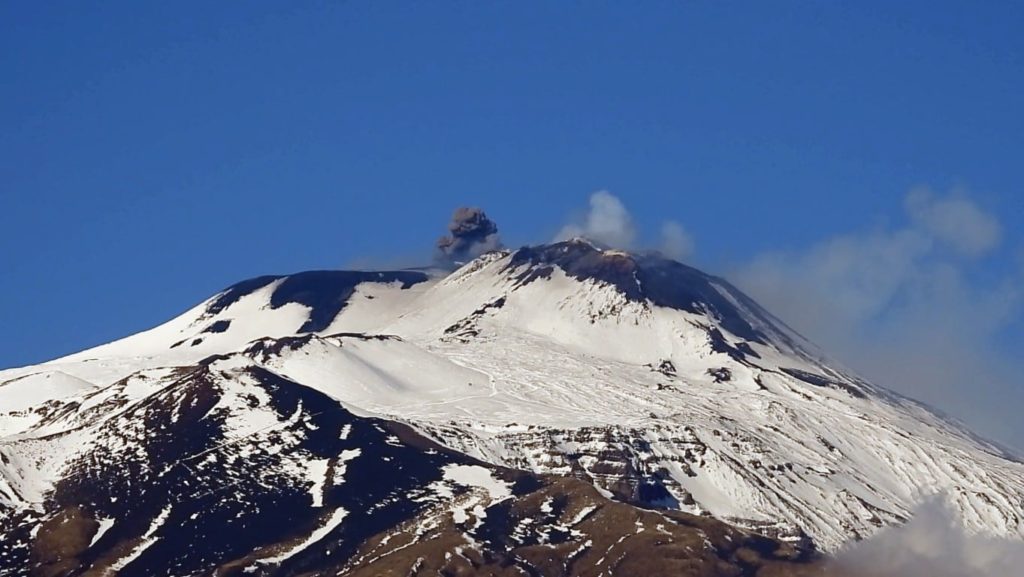

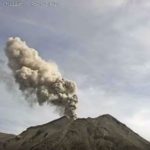
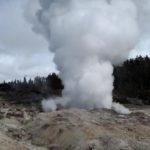


No comment yet, add your voice below!